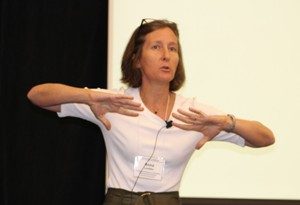
Lembke came to the summer conference to talk specifically about her personal experience in treating people dealing with addictions to prescription drugs. She said there is a direct correlation between the massive increase in prescriptions for opioids to the spike in opioid related deaths. She also specified it wasn’t one certain set of physicians who were prescribing a large amount, all physicians are over-prescribing, she said.
“Today in our culture, we really believe that pain is dangerous,” Lembke said. “I think it’s worth noting that this is a very modern concept. We used to believe that pain was a good thing and meant the body was healing. We don’t think of pain that way anymore.”
Lembke spoke about her recent book Drug Dealer, M.D. which takes a deep dive into the opioid crisis gripping America, including how doctors and patients got into the crisis and possible ways to get out of it. With her background, Lembke has a unique perspective on what motivates those addicted to painkillers and why doctors have been susceptible to over-prescribing.
Lembke took a deep dive into the startling number of prescriptions filled in the past ten years and the coinciding spike in the number of prescription overdose deaths. Currently in the United States, 16,000 people die from prescription opioid overdoses each year, according to the Center for Disease Control. As a medical professional who works with people struggling with pain and pill dependency, Lembke urged those in the audience to focus on what she thinks is the true culprit behind the opioid epidemic; pills being promoted as a quick fix to problems, over-prescribing and pharmaceutical companies working together with organized medicine to create profits at the expense of patients.
Importantly, Lembke talked about possible solutions as more is revealed about the opioid crisis. One suggestion was more alternatives to treating pain, including physical therapy and group therapy, and making sure those treatments are covered by health insurance. She also stressed thinking of addiction as a remitting disease and build places inside medical centers to treat addiction.



